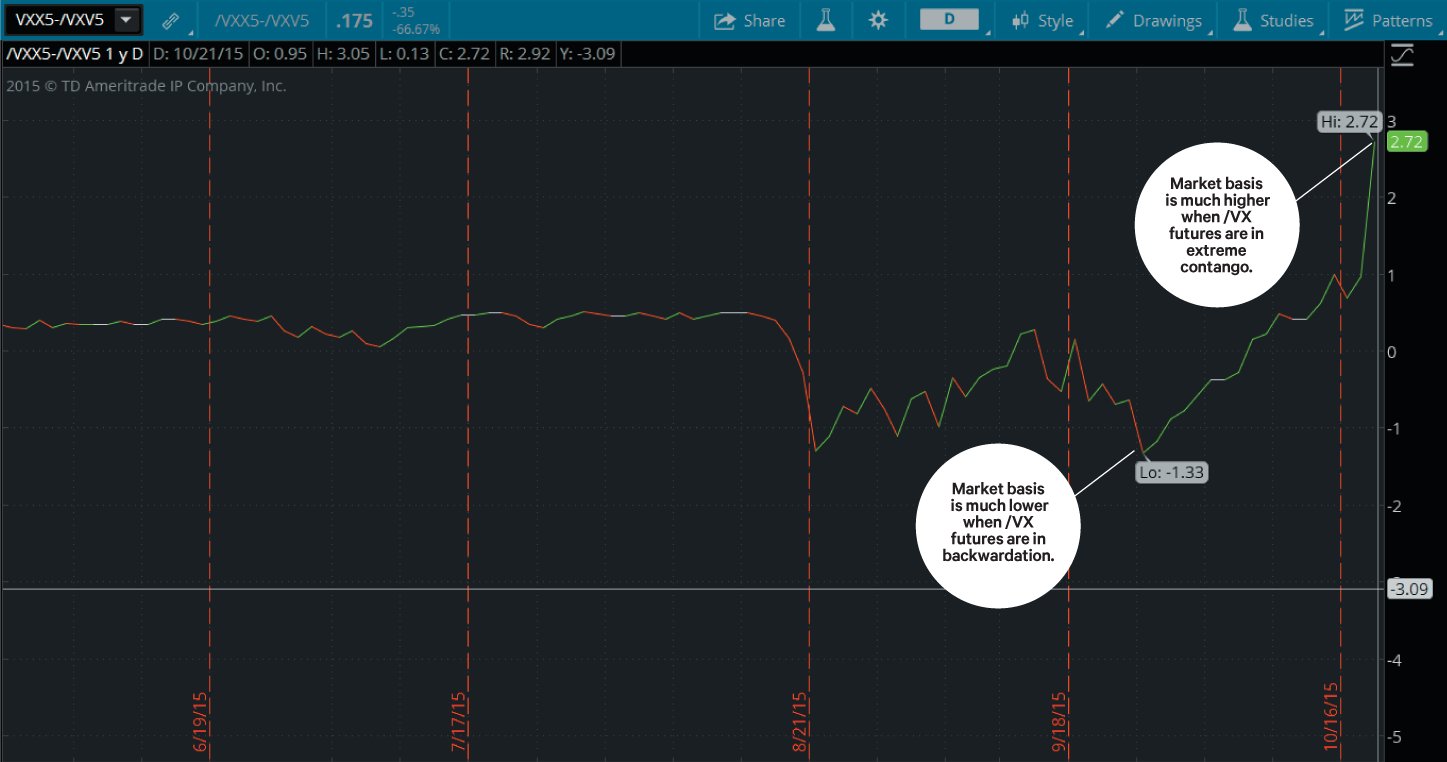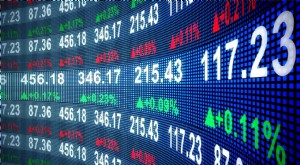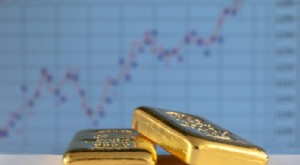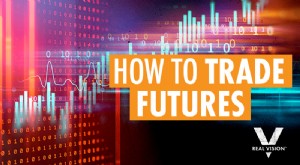Cómo operar con futuros en 3-D:operaciones básicas
Los futuros pueden ser una forma sencilla y rentable de capital para especular o cubrir. ¿Crees que el precio del maíz está subiendo? Comprar un contrato de futuros de maíz / ZC es una forma más fácil de apostar que comprar una granja de maíz y cultivar la suya propia. ¿Qué tal una cobertura a corto plazo en una gran cartera de acciones del S&P 500? justo antes de un anuncio de la Fed? / Los futuros de ES S&P 500 se ajustan a ese proyecto. Al igual que las acciones, los futuros pueden ser operaciones a largo plazo o cabelleras rápidas. Pero a diferencia de las acciones, Los futuros también pueden ofrecer diferentes oportunidades comerciales debido a su base, que pocos traders individuales novatos conocen.
Base 101
"Base" es el término para la diferencia en los precios de futuros en diferentes vencimientos, o el precio de contado (“spot”) del producto subyacente y el precio de futuros. Los precios de los futuros en los distintos vencimientos son diferentes entre sí y el precio al contado debido al costo de acarreo, y el impacto de la oferta y la demanda. Esa diferencia representa la base. / Futuros de ES, por ejemplo, tienen contratos que vencen en marzo, Junio, Septiembre, y diciembre. / Los futuros de maíz ZC tienen contratos que vencen en marzo, Mayo, Julio, Septiembre, y diciembre. / Bonos ZB, / GC oro y, / Los futuros de petróleo crudo CL tienen su propio conjunto de vencimientos.
Base comercial
En una palabra, el comercio de base es comprar un futuro en un mes de vencimiento, y venderlo en un mes de vencimiento diferente, como vender el marzo / ES y comprar el junio / ES. Es una especie de comercio de pares entre mercados, pero con una correlación cercana al 100%. Estás especulando sobre la base del aumento y la ampliación, o disminuyendo y estrechando. Debido a que los dos futuros se basan en el mismo subyacente (por ejemplo, S&P 500, Bonos del Tesoro, petróleo crudo, etc.), están altamente correlacionados. Tienden a moverse hacia arriba y hacia abajo al mismo tiempo. Pero cuando no se mueven al mismo tiempo, o por la misma cantidad, la base cambia.
Porque la base puede ser negativa, donde el precio del futuro con vencimiento adicional es más bajo que el precio del futuro con vencimiento más cercano (también conocido como "backwardation"), es importante saber en qué dirección cree que se puede mover el futuro a corto plazo, en relación con el futuro del mes anterior. Algunos futuros como / ES están regularmente en backwardation, por lo que el ensanchamiento de la base significa que se vuelve más negativo. Si pensaras que se ensancharía podría considerar comprar el futuro a corto plazo y acortar el futuro del mes anterior (por ejemplo, compraría marzo / ES y corto junio / ES).
Cuando el precio de futuros con vencimiento adicional es más alto que los futuros con vencimiento más cercano, eso se llama "contango". En contango, la base es positiva. Si los futuros de / CL están en contango, y pensaste que la base se ensancharía, podría considerar acortar el futuro cercano al mes / CL, y comprar el futuro mes atrasado / CL.
4 pasos para obtener la base
Para comerciar con base, tienes que ver la base. Con ese, pensadores ® lo tiene cubierto.
1. En la pestaña Comercio de thinkorswim ® , puede ver los vencimientos de futuros disponibles escribiendo el símbolo raíz (por ejemplo, / ES) y seleccionando "Todos" en el menú desplegable.
2. Para ver el precio base entre vencimientos consecutivos de futuros, haga clic en el menú desplegable "Difundir" y seleccione "Calendario".
3. Haga clic en la flecha junto a uno de los futuros para expandir el precio base, cuál es la expiración posterior (o posterior), menos el vencimiento más cercano.
4. A partir del precio base que acaba de abrir, puede graficar la base haciendo clic con el botón derecho en el "=" antes del símbolo de futuros, y siguiendo la ruta de clic "Más información ..."> Gráficos TOS> cuadrado superior izquierdo en el menú de la cuadrícula del gráfico.
FIGURE 1: Source:thinkorswim by TD Ameritrade. Solo con fines ilustrativos.
Basis Trading In the Real World
You may consider the futures basis because they can be traded by themselves, kind of like stocks pairs trades. Por ejemplo, maybe you don’t have a bullish or bearish bias on the futures’ underlying product itself. But considering the futures basis, you think it might move higher or lower.
Trading the futures basis also has potential advantages over stock pairs trading. Primero, the contract and tick size are the same for a given future. You don't need to adjust the quantities of the trade to account for different contract specification. Segundo, the margin requirement for the basis trades can be lower than for a single long or short future because the basis trade is simultaneously long and short futures. The basis tends to have smaller price changes than the individual future would. So the margin requirement is also smaller.
Let’s look at three futures basis trading scenarios.
Crude Oil (/CL)
Crude oil futures contracts typically go out a couple of years. They’re one of the most liquid, actively traded futures contracts, and the basis can move around a lot. To understand why, think about how crude oil gets turned into gasoline and other “stuff.” It gets pumped out of the ground and transported to a refinery, and that costs money. If the oil is stored, there are insurance and storage fees, as well as interest charges if you’re borrowing money to buy it.
All those things go into the basis of /CL futures, and would make the further-term futures more expensive than near-term futures because those costs are built into the futures’ prices. But with the futures basis, there’s also the expectation of over- or under-supply in the coming months and years. You can see that when you look at /CL futures prices. Backwardation in /CL can happen when the market sees a shortage in crude oil, and where near-term demand outstrips immediate supply. The price of the near expiration /CL future is pushed higher than the back month. But /CL is more often in “contango, ” where the carry costs make the back months slightly higher than the near months, and there is Backwardation in /CL can happen when the market sees a shortage in crude oil, and where near-term demand outstrips immediate supply. The price of the near expiration /CL future is pushed higher than the back month. But /CL is more often in “contango, ” where the carry costs make the back months slightly higher than the near months, and there is equilibrium between supply and demand. If you see /CL in backwardation and you think the causes are temporary, and that /CL will move back to contango, you could consider shorting the near-expiration /CL and buy the further-expiration /CL. The risk, por supuesto, is that /CL could move further in backwardation, resulting in a loss on the trade. And there’s never a guarantee that contango has to happen in the future. But the trade could be profitable if the futures move back to contango before the expiration of the near-term future.
S&P 500 Index (/ES)
One of the most widely watched and actively traded futures is the /ES contract based on the S&P 500 stock index. /ES trades until 3:15 p.m. CT during “regular” market hours. The price of /ES is based on the value of the stocks in the S&P 500 (which is the SPX index), and the cost to carry the portfolio of those stocks. There is an interest charge to borrow money to buy shares. The interest is offset by dividends that are paid by the S&P 500 stocks.
The net impact of interest and dividends determines the basis between the / ES and the SPX. Nowadays with interest rates low relative to dividends, /ES futures are usually in backwardation, and the basis doesn’t fluctuate much. But because S&P 500 stocks stop trading at 3:00 p.m. CT, asi que, también, does the price of the SPX stop updating. And in the 15 minutes between 3:00 p.m. and 3:15 p.m., when the /ES continues to trade, it can move higher or lower than what the basis calculation would suggest based on news that arrives after 3:00 p.m., or on the opening of large positions in /ES in the last 15 minutes of trading that anticipate the next day’s price movement.
If the /ES to SPX basis is $-10, when the /ES moves up relative to where SPX closed and makes the basis $-8, por ejemplo, that can signal a stronger open the next day. If / ES moves down relative to the SPX closing price to make the basis $-12, that can signal a weaker open the next day. Looking at the /ES to SPX basis before and after 3:00 pm can give you a clue as to the next day’s opening price action. This may impact stop orders, and even technical indicators you might be tracking.
CBOE Volatility Index (/VX)
Volatility futures might be the trickiest to understand. But they might offer the most interesting opportunities. The CBOE Volatility Index (VIX) is derived from the out-of-the-money SPX option prices. When traders anticipate larger price changes in the SPX (i.e. more volatility), the out-of-the-money SPX option prices can increase in price. That, Sucesivamente, pushes up the VIX. When traders anticipate smaller price changes in the SPX (i.e., lower volatility), the out-of-the-money SPX prices can drop, which in turn drives the VIX lower.
You can’t trade the VIX directly, and /VX futures are a way to speculate on the direction of volatility. But /VX futures are only modestly tied to the VIX. “Modestly” because /VX settles to the VIX settlement value at their expiration. But there isn’t any cost of carry between the VIX and /VX futures be- cause you can’t buy the VIX like you can buy crude oil or a stock portfolio. That makes /VX futures pure indications of how much future volatility the market anticipates. The basis you see between the near and further month in /VX futures reflects whether the market sees more volatility near term or longer term.
Most of the time /VX futures are in contango—where the market expects more volatility the further into the future you look. But when the market panics and drops, generally the VIX rallies the most, the closest expiration /VX future rallies a bit less, and further expiration /VX futures rally a little less than those. That can push /VX futures into backwardation, and make the basis negative.
Figure 2 charts just this scenario, when a market dropped and pushed volatility higher, and the /VX basis became negative.

FIGURE 2:NEGATIVE BASIS
To view basis on /VX, you have to enter it manually as a pair (i.e., longer-term future minus shorter-term future, or /VXX5-/VXV5 as shown above). Most of the time, /VX futures are in contango, as was the case prior to August in the chart. Source:thinkorswim by TD Ameritrade. Solo con fines ilustrativos.
Most of the time, the price of the back-month /VX future is higher than the price of the near-month /VX future, and the basis is positive. When the market became more volatile, the basis became negative. If you believe the market will calm down, and the front-month /VX will drop relative to the back month, and the basis will go from negative to positive, you could consider shorting the front-month /VX future and buy the backmonth /VX future. That trade could be profitable if the basis goes from negative to positive. But the trade would lose money if the basis became more negative—which is something that happened in the 2008 market crisis.
At the closing bell, /VX basis trading isn’t for the faint of heart. If you’re already a proficient futures trader, consider this another tool in the strategy toolbox. But even if you’re not ready to trade it, /VX basis can certainly offer you clues as to how the market is forecasting volatility.
Open a Futures Account
For qualified accounts, you’ll need Level 3 options approval to trade futures. Log in to your account at tdameritrade.com. Under the Trade tab, go to Futures &Forex for more information.
Negociación de futuros
- Base estrecha
- ¿Está listo para negociar futuros?
- ¿Cómo funcionan los futuros del S&P 500?
- Introducción al comercio de futuros de plata
- Cómo negociar futuros del índice Dow Jones
- Comercio de papel
- Cómo comerciar con petróleo crudo
- Cómo comenzar a operar en los mercados de productos básicos agrícolas
- Cómo negociar futuros de materias primas mediante software
-
 Cómo negociar acciones
Cómo negociar acciones Negociar acciones puede parecer glamoroso, pero entre bastidores es realmente mucho trabajo y puede implicar una investigación exhaustiva. Si bien no siempre es fácil, los nuevos inversores pueden tom...
-
 Cómo empezar a operar con futuros
Cómo empezar a operar con futuros Por:Wayne Duggan Para los comerciantes más nuevos, Los contratos de futuros pueden parecer un mercado complicado reservado solo para operadores experimentados. Pero los futuros son como cualquier...


